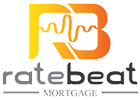
Home Loan Options: Which is Best For You?
Purchasing a home is a significant milestone. There are very few people who have the opportunity to purchase their home with cash, so the smart decision will be taking out a mortgage. However, there is no one right-fit mortgage as there are different types of mortgages with varied benefits – from interest rates to duration of the mortgage. Therefore, you should carefully consider your options and pick a mortgage that will suit both your lifestyle and financial needs.
Here is a brief overview of the three main categories of mortgages you need to understand to get a head start.
FIXED INTEREST RATE OR ADJUSTABLE INTEREST RATE
The first thing you need to decide when you choose your mortgage is the type of interest you are comfortable with. You can either opt for a fixed-rate mortgage or an adjustable-rate mortgage. Given below are the highlights of both these loan options to help you understand and decide.
FIXED-RATE MORTGAGE:
A fixed-rate mortgage will have the same interest rate for the entire length of the loan. This offers predictable monthly payment usually for a term of 10, 15, 20, or 30 years. Housing market rates may rise or fall, but your interest rate will be unchanged. This option is best suited to buyers who intend to stay in their homes for a long period of more than 10 years. The characteristics of a fixed-rate mortgage are:
- Stability as you will know what your monthly payments are and if the interest rates drop significantly you have the option to refinance.
- As interest rate and payment stay the same it is easier for you to plan your budget.
- The interest rate might be higher than an adjustable-interest-rate loan.
- The longer the loan term higher the interest rate. For example, a 30-year fixed mortgage will have a higher interest rate than a 15 or 20-year fixed mortgage.
AN ADJUSTABLE-RATE MORTGAGE (ARM):
An adjustable-rate mortgage (ARM) is a mortgage in which the interest rate is adjusted periodically based on an index plus a set margin. The adjustment period is represented by fractions like 5/1 which means that the rate will adjust after five years and then continue and reset every year over the life of the loan. An arm is a good option for borrowers who plan to move into a different house in the next five to ten years. The highlights of this option are:
- Get a lower initial interest rate than a fixed-rate mortgage.
- Your payments will be lower during the initial term.
- You can qualify for a more expensive home.
- It is a better option if you think you can invest better elsewhere or want to save money.
- When interest rates go up your monthly payments will also increase, so you need to be sure if you can afford them.
CONVENTIONAL OR GOVERNMENT BACKED MORTGAGE
The next decision you need to make is whether you qualify for a conventional or government-backed mortgage.
CONVENTIONAL MORTGAGE
A Conventional mortgage is a loan from a private lender or insured from federal companies Fannie Mae or Freddie Mac. Depending on your lender, you will require a certain amount of down payment, a good credit score, and a debt-to-income ratio of 36% or less to qualify for this type of loan.
GOVERNMENT BACKED MORTGAGE
Government-backed mortgages are subsidized by the government. They are for borrowers who do not qualify for a conventional mortgage and certain specific groups of people like military veterans, people with low-to-moderate income, and those wanting to purchase a home in a rural area. These loans typically have more flexible requirements when it comes to down-payment, credit scores, and debt-to-income ratio. Though these loans are insured by the government you will have to go to a private lender to get one. There are three main types of government-backed loans available to eligible borrowers, they are FHA, VA & USDA loans.
CONFORMING OR A NON- CONFORMING MORTGAGE
One of the final choices you may have to face is deciding between a conforming and a non-conforming loan.
CONFORMING MORTGAGE
A conforming mortgage follows the guidelines set by Fannie Mae and Freddie Mac. They pertain to the borrower’s credit, income, down payment, and loan amounts. However, the term “conforming” is used to refer specifically to the mortgage amount you can borrow to purchase your home. The loan amount must fall within what is called “conforming loan limit” which changes every year and depends on where you live. In 2020 the limit in most parts of the U.S is $510,400.These loans are attractive for many reasons:
- With a 20% down payment, the money borrowed is less so you have more home-equity when the home is purchased.
- A down payment of 20% also means more monthly savings as there is no need for Private Mortgage Insurance or PMI.
- Monthly payments are also lower as you get the best interest rates when you have a 20% down payment, good credit scores, and strong reserves.
NON-CONFORMING MORTGAGE
Non-conforming mortgages are also known as jumbo loans. These loans are for an amount that exceeds the Fannie Mae and Freddie Mac loan limits. The highlights of this type of loan are:
- You can purchase a higher-priced home if you can afford it.
- To qualify you will need an excellent credit score, a larger down payment, and a lower-debt-to income ratio.
- Helps borrowers to finance more of their home than tying up their cash.
You can click here to learn more about these loans.
Contact our loan expert at (877) 877 7575 if you have any questions.


